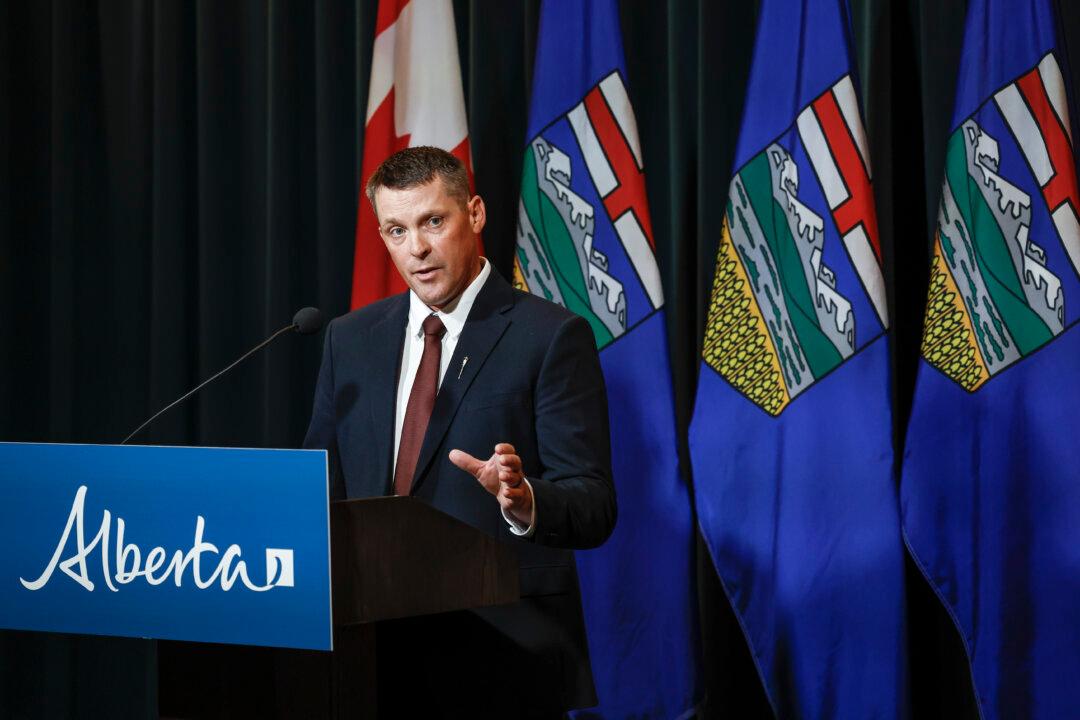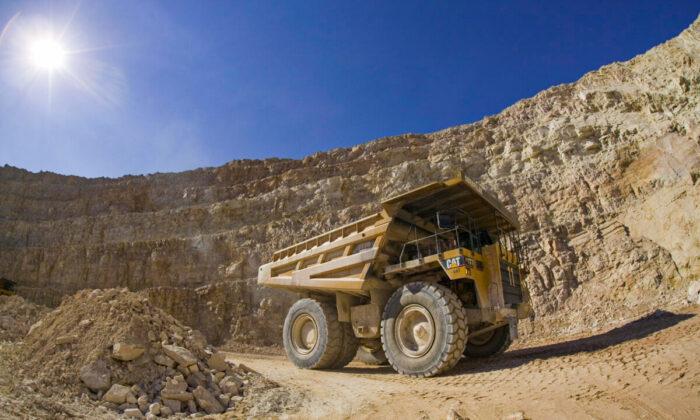Ahead of the release of the provincial budget on Feb. 27, the Alberta government
said it will need to make “prudent choices” given priorities on health care, school construction, access to public services, and ongoing bargaining for public sector workers.
With U.S. President Donald Trump’s tariff threats looming, it remains to be seen how the provincial budget may be impacted. The president has for now paused his previously announced 25 percent blanket tariffs on Canadian products, with a carveout for energy products at 10 percent. However, he has since added tariffs on all steel and aluminum imports, set to take effect on March 12, and signalled that more tariffs may come after his officials review existing trade pacts by April.
Provinces like Nova Scotia and British Columbia have factored the risk of tariffs into their budgets. On Feb. 18, Nova Scotia’s Progressive Conservative government
introduced major tax cuts in its
2025–26 budget along with a reserve fund in case Trump follows through with his tariffs. The budget also provides for investments to diversify the province’s markets and develop resources in areas such as critical minerals and wind power.
The B.C. New Democratic government said in its Feb. 18
throne speech that it would review its programs and spending to adapt to the shifting trading landscape. It
vowed to stand against U.S. tariffs, calling the next four years the “most consequential time for our province since the Second World War.” This followed the NDP government’s Feb. 13
announcement to abandon its election campaign promise of a $1,000 rebate to residents, citing the need for cost saving amid tariff threats. In particular, U.S. tariffs on B.C.
softwood lumber could reach 50–55 percent from the current 14 percent, the province’s minister of forests said.
Economist Jack Mintz, president’s fellow at the University of Calgary’s School of Public Policy, told The Epoch Times that U.S. tariffs may not figure as prominently in Alberta’s budget and that population growth would be a bigger factor.
He said tariffs would have little impact on Alberta since U.S. refineries rely on the province’s oil—at least in the short term—and the reduced 10 percent tariff, should it come, would likely be passed on to American consumers instead of affecting producers.
He added that fluctuating oil prices would be another factor impacting the budget.
Population Growth
Alberta was the fastest-growing province in Canada in the last fiscal year, 2023
–24, with its population
increasing by 4.3 percent. It also recorded the
largest net migration from other provinces and territories that year. Moreover, Alberta received more than
450,000 new residents in the last three years, according to provincial estimates from last November.
“They need to build more schools, there is more money that has to be put in health care, so that’s a pressure point,” Mintz said.
Alberta’s Budget 2024, which forecasted a $367 million surplus but required borrowing money to meet immediate spending needs,
allocated $26.2 billion to the Ministry of Health, including $6.6 billion for physician compensation and development programs, $3.6 billion over three years to maintain or expand health-care facilities, $2 billion per year for drugs and supplemental health benefit programs, and $1.55 billion to support recovery programs for those facing addiction or mental health challenges.
The Ministry of Education received $9.3 billion in funding in fiscal 2024–25, representing a 4.4 percent increase over the previous year. This included $1.9 billion over three years for constructing new schools, more than $1.2 billion over three years to support enrolment growth and new teacher hiring, more than $1.5 billion to fund learning supports for vulnerable students and children with specialized learning needs, and nearly $1 billion for post-secondary programs.
“Alberta is facing headwinds from every direction right now: cross-border trade issues, volatile oil prices and pressure on our public services as more people move here to make Alberta their home,” said Finance Minister Nate Horner in a Feb. 4
statement ahead of the budget release.
Mintz noted that, while the rise in population requires additional investments in public services, it also represents more personal income tax revenue for the province.
At the same time, the province plans to cut personal income tax, in keeping with an election promise by Premier Danielle Smith, although the timing is unclear. The premier
said last year the promised cut would have to wait to be “phased in responsibly.”
Additionally, Mintz said, the government has committed to growing Alberta’s Heritage Fund, which may involve allocating new dollars to the fund. On Jan. 29, the province
announced a long-term plan and a new Crown corporation to grow the fund to $250 billion over the next 25 years in a bid to protect Alberta’s economy from the “volatility” of the energy sector.
“You got a lot of pressure there, and there’s going to have to be some real thinking about how to deal with the spending side of the budget,” Mintz said. “Then you get tariffs, which is really on top of all this.”
Deficits and Budget Balance
In its
second-quarter fiscal update, delivered Nov. 21, 2024, Alberta projected a budget
surplus of $4.6 billion by the end of the 2024
–25 fiscal year, which runs until March 31. That surplus, the province said, was “due mainly to higher revenue from personal income taxes and non-renewable resources.”
The province also projected slightly higher
expenditures for 2024
–25, at $73.3 billion, about $143 million more than budgeted. Health care was the largest expense, at $25.5 billion. This was followed by costs for other ministries along with the legislative assembly, investments in kindergarten to Grade 12 education, investments in post-secondary education, and costs related to seniors, community, and social services.
Taxpayer-supported
debt is projected to reach $84 billion by the end of the fiscal year, $3.8 billion less than estimated in the budget, but $2.2 billion
more than the previous year’s debt, due to additional borrowing needed for upcoming debt maturities, the province said in its fiscal update.
Ahead of the release of last year’s budget, Premier Smith signalled the need for spending restraint, saying fuel prices could decline that year and that the province couldn’t continue relying on resource revenues to balance its budget and risk running a deficit.
“Bouncing between years of plenty, and then having to choose between incurring massive debt or cutting key social programs is not the recurring story Albertans want to see time and again,” Smith
said in an address to the province on Feb. 21, 2024.
NDP Leader Naheed Nenshi has said he’s worried about the potential ramifications of a budget deficit, including service cuts.
“I warned when this government took power that their first budget, instead of taking us off the resource roller-coaster, actually made us more dependent on oil and gas royalties,” Nenshi said last October.
Tegan Hill, director of Alberta Policy at the Fraser Institute, estimates that without “historically high levels of resource revenue,” including oil and gas royalties, Alberta would be looking at a deficit in the billions this year. She told The Epoch Times that the best way for the province to get its “fiscal house” in order is to restrain government spending.
In her address ahead of last year’s budget, Smith said she instructed Finance Minister Horner to limit government spending to below the legislated rate cap of inflation plus population growth. She asked that this be done “not just during lean years with lower oil prices as we expect next year, … but also in years when high oil and natural gas prices result in billions of surplus provincial dollars.”







